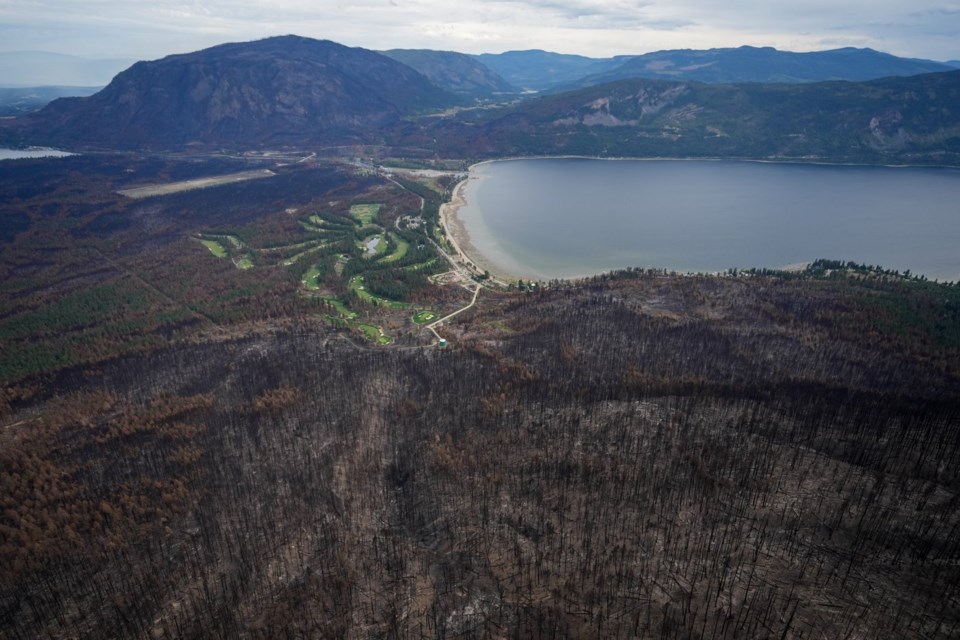The largest study of Canada's catastrophic 2023 wildfire season concludes it is "inescapable" that the record burn was caused by extreme heat and parching drought, while adding the amount of young forests consumed could make recovery harder.
And it warns that the extreme temperatures seen that year were already equivalent to some climate projections for 2050.
"It is inescapable that extreme heat and moisture deficits enabled the record-breaking 2023 fire season," says the study, published Tuesday in the journal Nature Communications.
That season burned 150,000 square kilometres -- seven times the historical average -- forced 232,000 Canadians from their homes and required help from 5,500 firefighters from around the world, as well as national resources and the military. Smoke drifted as far as western Europe.
"In 2023, we had the most extreme fire weather conditions on record over much of the country," said Piyush Jain, a scientist with Natural Resources Canada. "I think the connection is pretty clear."
The paper finds that although there were differences in how the 2023 fire season played out in Western, Northern, Eastern and Atlantic Canada, the underlying causes were the same. That season had more extreme fire weather -- defined as a combination of heat and drought that exceeds 95 per cent of all fire season days -- than any year since records began in 1940.
Temperatures across the country averaged 2.2 degrees above normal during the fire season.
But while the West's fires were abetted by a drought ongoing for years, Quebec suffered from a relatively new phenomenon known as "flash drought."
"That area was not in drought," said Jain. "It transitioned to drought very, very quickly."
The paper calls flash drought "an emerging process we are only beginning to understand."
The paper finds the long periods of hot and dry weather were worsened by high-pressure zones that blocked the normal movement of air normally driven by the jet stream, a high-altitude river of air circling the planet that drives much of Earth's weather. Most places in Canada experience an average of 14 days under such immobile high-pressure systems. In 2023, areas that suffered the worst fires had as many as 60.
As well, may of those so-called "blocking events" in the West occurred early in the season, hastening mountain snowmelt and increasing the amount of time forests were vulnerable to fire.
"It was driven by these large-scale weather events," Jain said.
The widespread dry weather contributed to making fires that were larger than ever. Although 2023 saw 834 large fires, only 60 of them were responsible for nearly three-quarters of the area burned.
Only seven per cent of the burned area was affected by human-caused flames. Lightning accounted for the rest.
The fires also burned more than 10,000 square kilometres of forest that had already burned within the last three decades.
"This disturbance has the potential to cause extensive post-fire tree regeneration failures, because immature trees cannot provide enough seeds following a fire," the report says.
Some areas could permanently shift to grassland or other ecosystems. Previous research has found frequent reburns have turned boreal forests into broadleaf forests or shrublands.
"If a young forest is not at the stage where it would naturally propagate, you may have those species being eliminated from the landscape," Jain said.
The report says more than 3,000 square kilometres of commercial forest in Quebec is now vulnerable to "regeneration failures."
The new study comes after previous work that has found climate change made the conditions that created the fires up to three times more likely.
The 2023 combination of extreme heat and drought could be a precursor of what is to come, Jain said. Climate models suggest that under the most extreme carbon emission scenarios, those conditions could be normal by 2050.
"By the middle of the century, we will frequently be getting the same weather conditions we had in 2023," said Jain. "That would have implications for more of these large fire seasons."
This report by The Canadian Press was first published Aug. 21, 2024.
Bob Weber, The Canadian Press



